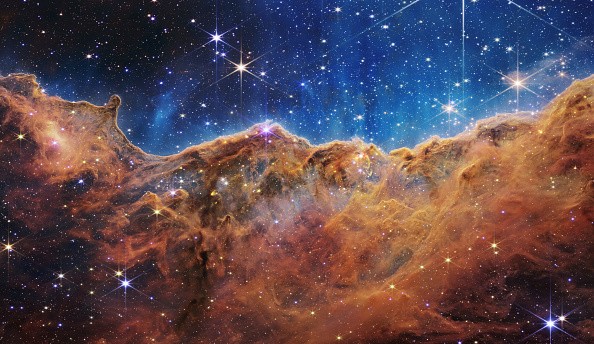Scientists observed and discovered galaxies merging using the James Webb Space Telescope. The magnificent image allowed international scientists to look at it firsthand.
The James Webb Space Telescope has helped provide sharp and detailed images of space.
According to AccuWeather's Astronomy News, NASA explained that the discovery would help expand their understanding of galaxy clusters and the cosmic web.
Meanwhile, the report added that the Astrophysical Journal Letters published research revealed one image from the telescope's latest captured image of the said galaxy transition.
According to Space Telescope Science Institute, the James Webb Space Telescope (JWST) is NASA's flagship infrared observatory program. JWST is a partnership with European Space Agency and Canadian Space Agency that was launched in December 2021.
With the JWST, scientists and astronomy lovers can observe or witness the formation of stars, planets, galaxies, and solar systems that could contribute to news and data analysis.
Meanwhile, co-principal investigator Nadia L. Zakamsk and the project's founder explained that they spent several weeks looking at the images after using the Webb data. Zakamska is also a Johns Hopkins astrophysicist.
Before the researcher looked into Webb's data, they thought there was an interaction with other galaxies and on the merger's path.
On the contrary, AccuWeather said that the study's co-author Andrey Vayner added that something dramatic could occur in the said systems. Vayner is also a postdoctoral fellow from Johns Hopkins studying galaxies.
NASA added that the image was the most powerful, noting that from an extreme distance, it is a galactic nuclei that scientists have seen. The report said that it was estimated at 11.5 billion years old.
Orion Nebula
The James Webb Telescope recently captured a magnificent image of a stellar nursery in the Orion Nebula, unveiling details about stars and their planetary form. The telescope managed to capture the picture despite the large stardust in the area.
The image could allow discoveries about what is present beyond the stars.
CNN reported that the images were breathtaking, showing the detailed and sharpest Orion Nebula.

NASA ROVER
In a previous report in October, NASA Perseverance Rover captured a rare image of a cat loaf rock on Mars Jezero Cater, noting that resemblance of a cat comfortably chilling on the surface.
The amazing image of a cat-looking from NASA became a viral topic on social media, and NASA made it the week's photo.
The astronomers used NASA's advanced cameras.
Meanwhile, NASA also found rock samples on Mars that could allow scientists to study past life on the said planet. According to the report, NASA Perseverance detected the highest concentrations of organic molecules in the samples.
The Perseverance Rover is an initiative from NASA to detect and study potential life on the said planet. The rover was launched on October 30, 2020, and the report noted that it landed on Jezero Crater on February 18, 2021.
In the same month of September, Jupiter also reached the closest approach to the planet after 59 years. The report noted that studying Jupiter could lead to significant discoveries in understanding the solar system.
For more similar, don't forget to follow Nature World News.
© 2025 NatureWorldNews.com All rights reserved. Do not reproduce without permission.





